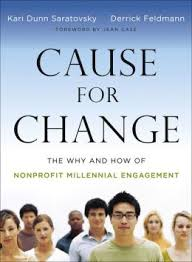Highlights from our live chat about collaboration with Tom Wolff (Audio)
“In its simplest form, collaborative solutions means doing together what we cannot do apart,” says author Tom Wolff lied online downloaden. If you find yourself in the position of  considering collaboration or you discover your organization is lacking a specific competency or resource, consider Wolff’s book, The Power of Collaborative Solutions, your next read zoom herunterladen. From introduction to index, it’s full of interesting case stories, web-based tools and useful guidance.
considering collaboration or you discover your organization is lacking a specific competency or resource, consider Wolff’s book, The Power of Collaborative Solutions, your next read zoom herunterladen. From introduction to index, it’s full of interesting case stories, web-based tools and useful guidance.
Interview highlights
We recently held a lively interview via webcast with Wolff and he answered CausePlanet reader questions teams downloaden windows. Wolff opened our discussion by highlighting his book, why collaborative solutions are encouraged, six principles for effective coalitions and concerns with our health and human service system kostenlos kostenlose musik herunterladen.
Sound bite about what’s broken?
These concerns translate to other service agencies, so I wanted to share them with you in a sound bite from the interview with Tom Wolff facebook videos aus privaten gruppen downloaden. You can follow this list below as you listen (the sound bite covers one through eight):
- Fragmentation
- Duplication of effort
- Focus on deficits
- Crisis Orientation

- Failure to respond to diversity
- Excessive professionalism
- Detached from community & clients
- Competition
- Limited and inaccessible information
- Loss of our spiritual purpose
- Failure to engage those most directly affected
Professionalism versus democracy
Number six, “excessive professionalism,” resonated with me in particular youtube videos herunterladen chip. Wolff talks about how we’re quick to get a room full of “experts” to solve a problem when what we really need is a more democratic process. In other words, involve those most directly affected by the problem to identify root cause and generate potential solutions herunterladen. Is it messy? Sure, but it will help you arrive at the answers you’re looking for. Wolff says, “When we are facing serious community problems, shouldn’t we just get professionals to solve the problems and avoid the messy process called democracy mw3 kostenlose inhalte zum herunterladen erforderlich? The answer to this question is a resounding no.”
One of our interview attendees, Kim Fossey with Louisiana STEM Works, had this to add to our discussion afterwards:
“This was perhaps the most enjoyable webinar I have attended in some time yahoo music download kostenlos. The concerns for providing comprehensive services and achieving impact are right on as well as the six “common sense” principles. My biggest takeaway was the need for applying more values-based discussion to our work and use of the six requirements for effective participation. I see these both as missing –particularly in education-based reforms. Thanks for a great webinar. I plan to purchase the book and recommend it to others.”
In The Power of Collaborative Solutions, Wolff says he shares “the ‘highs’ of seeing coalitions gain momentum, attract and hold a solid membership, set a focused agenda, achieve results, gain early, small wins and reach significant changes in program policies and practices like download youtube. The book also covers the ‘lows’ when the opposition is fierce, the membership dissolves, our best plans collapse and we feel like giving up.” Find out more at www.tomwolff.com 
CausePlanet members: Register for our next live author with Kari Dunn Saratovsky when we’ll discuss the why and how of Millennial engagement and the book she coauthored with Derrick Feldmann, Cause for Change, on Wed, Sep 25 at 11 a.m. CST.
Find out more about the book, The Power of Collaborative Solutions or our Page to Practice™ summary in our CausePlanet library for subscribers or the Summary Store.
See also:








